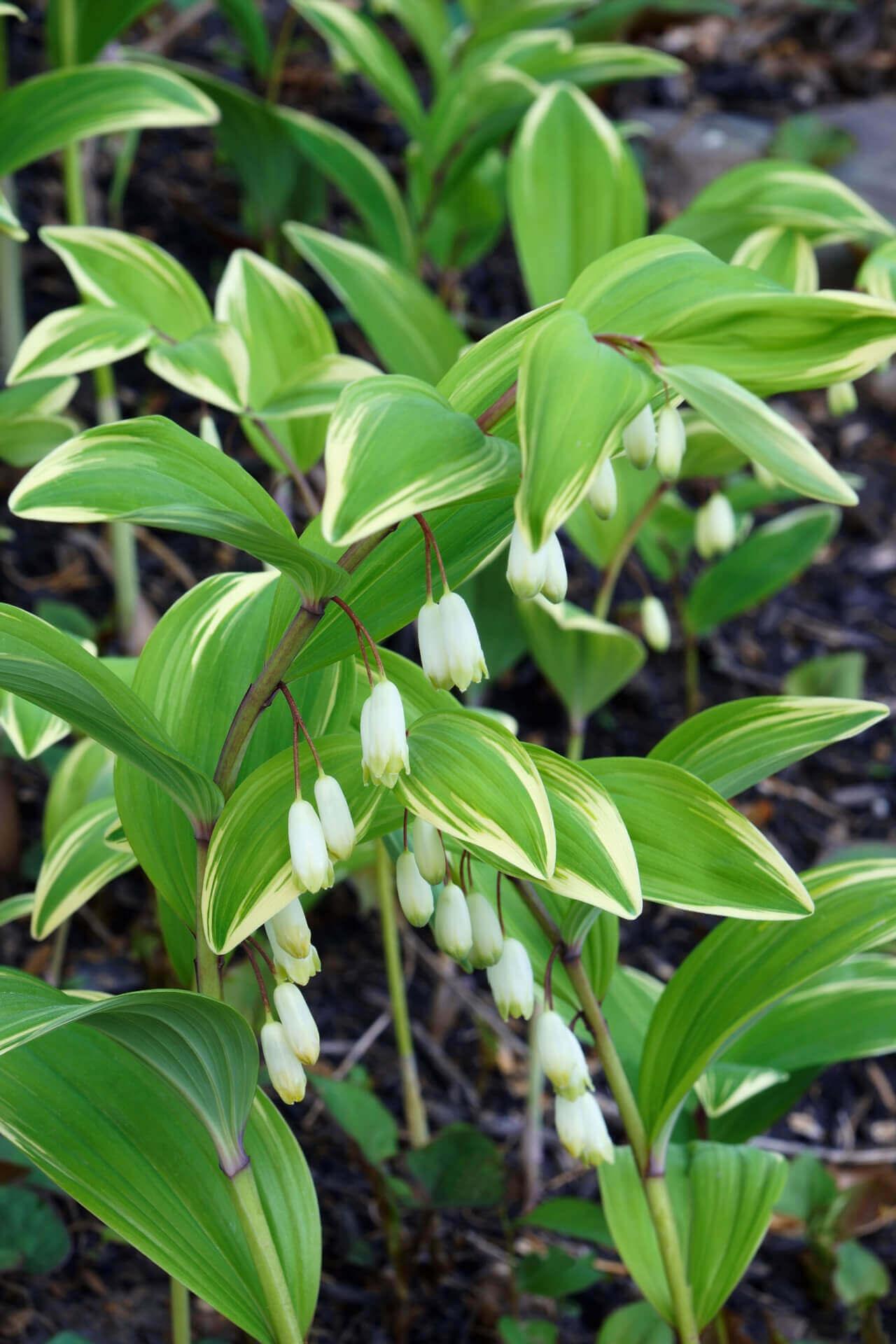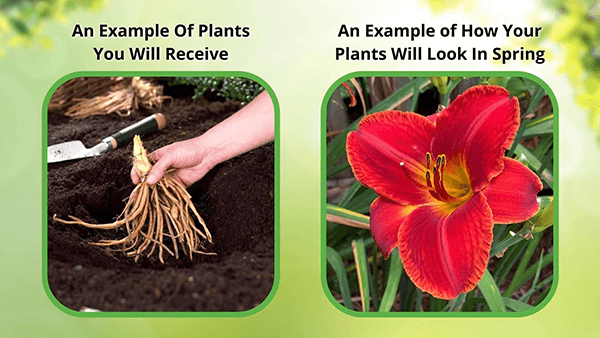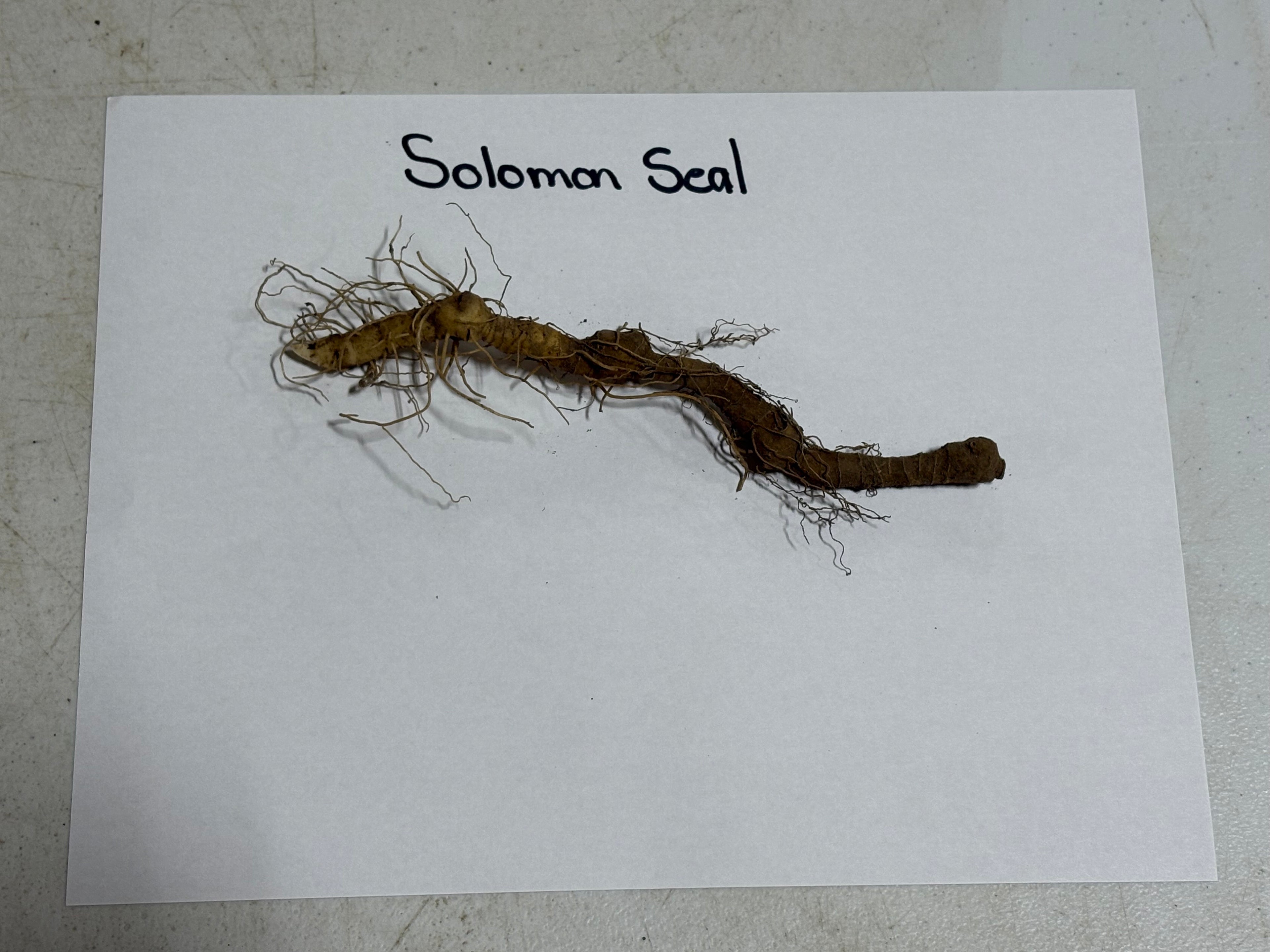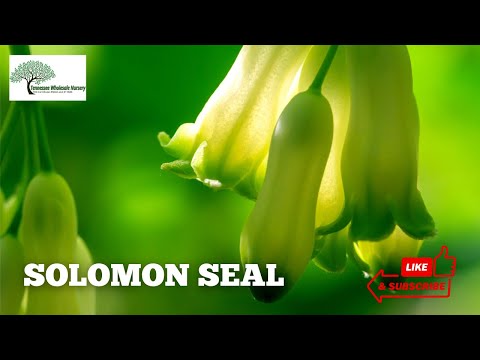Solomon's Seal Plants for Sale
Solomon's Seal (polygonatum biflorum) is a much-loved native perennial plant with bell-shaped white flowers that hang from the long, arching stems. Leaves are beautifully and lightly variegated with white streaks that look as though Mother Nature painted on them. It's hardy and has a long lifespan, returns every Spring season, and reblooms annually.
Another loved aspect of this perennial is its white flowers, complemented by paired leaves. After flowering, dark blue berries will develop, making it a highly prized perennial for flower beds.
Solomon's Seal Plant Details
Family: Asparagaceae
Light Requirement: Shade
Water Needs: Moderate
Height: 2 - 3 ft.
Spread: 1 - 2 ft.
Growth Rate: Slow
Bloom Time: Spring
Flower Color: White
Wildlife Value: Attracts bees and butterflies.
Landscape Uses and Maintenance
Add Solomon's Seal plant to your shady border or woodland garden. When it dies back, it will leave gaps, so be sure to plant other perennials to fill in the spots it leaves behind. It pairs beautifully with other spring-blooming perennials like Astilbe and Bleeding Heart, and with spreading ferns.
As an understory plant, it will thrive in an area with full to partial shade that is out of afternoon sun. The afternoon sun will lead to sun scald.
This is a low-maintenance plant that will need watering infrequently, making it a great choice for the busy gardener. However, make sure to water thoroughly and frequently from when you receive your plant until the root system is well established.
This plant prefers rich soil with plenty of organic matter. Add compost, leaf mold, or similar to the soil around this plant to give it rich soil. Fertilize in the early springtime before the new growth begins to encourage vigorous flowers to develop.
The Solomon's seal will slowly naturalize and spread in your garden, given enough space to do so and proper growing conditions, via its expanse of underground rhizomes. You can make the process faster by digging up parts of your plants to divide and replant.
Deer resistant. Watch this plant for nematode, slug, and snail activity. You will know they have found your plants when you see small holes or brown streaks on the leaves.
Noteworthy Characteristics
Solomon's Seal attracts birds and butterflies.
Exposure
Solomon's Seal prospers in partial to complete shade. It prefers dappled sunlight or light, filtered shade, making it ideal for woodland gardens or shaded areas. Too much unaffected sun can burn its leaves.
Height at Maturity
Over 12"
Usage
Shade Plant
Shipped As
Bare-root
Ships
USPS
Planting Zones
3-9




